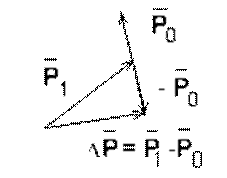
CATEGORIES:
BiologyChemistryConstructionCultureEcologyEconomyElectronicsFinanceGeographyHistoryInformaticsLawMathematicsMechanicsMedicineOtherPedagogyPhilosophyPhysicsPolicyPsychologySociologySportTourism
Motion in circle is accelerated motion
If a body moves in a circle with constant angular velocity the magnitude of its acceleration is equal to
And its resultant is inward along the radius. The resultant force acting on the uniformly rotating body is called the centripetal force.
The force of the accelerated body on the constraint has been called the inertial resistance. Such of force also exists, of course for circular motion – it is called the centrifugal force. Centrifugal force and centripetal force are equal in magnitude but oppositely directed. The centrifugal force is applied to the constraints of a body executing circular motion. Let us consider the action of force F. Suppose that at time interval Δt the force F may be considered with the satisfactory accuracy as constant, then
Figure 4.6
Diving the time of action t of a variable force into some intervals of time Δt, we may find the following resultant action of this force.
Since the total change in velocity of motion
For constant force Ft = mv2 - mv1 (4.25) The product of force and the time of its action is called impulse, and the product of the mass of a body and its velocity is termed the momentum of this body.
Figure 4.7
Figure 4.8
The impulse of a force is equal to the change of momentum of the body to which this force is applied. The action of variable forces is sometimes defined by the force termed mean force
There are different units for measuring mass and force. The International System of Units given the following definition of the fundamental physical units. Meter – a length equal to 165063.73 wave-length of the orange-red spectrum line of the atom of krypton having a mass number 86. This definition of a meter gives more precise measurement (10-9) than the distance taken between two lines engraved on the surface of a platinum–iridium bar. The mentioned spectrum is an orange-red line of krypton with atomic weight 86 and the symbols 2p10 and 5d5 arbitrarily denote two stationary conditions of this atom and the conversion from one condition into another is accompanied by this spectrum radiation. Second – 1/31556925.9747 fraction of the length of the tropical year for 1900, January, at 12 o’clock of ephemeral time. The tropical year is the interval of time between two successive passages in the same direction of the Sun through the Earth’s equatorial plane. The tropical year does not undergo irregular changes but it reduces by 0.5 sec per century. Ephemeral time is a time of uniform duration and is used for astronomic calculations and it does not depend on irregularities of rotation of the Earth. Kilogram – a unit of mass corresponding to the mass of the international standard kilogram Newton is that force which will produce an acceleration of 1 m/sec2 in a mass 1 kg.
According to the Absolute System of Units CGS (centimeter – gram - second) the unit of force is a dyne – 1 dyne =10-5 Newton. Note that the force with which a body having a mass of 1 kg is attracted to the Earth (it is termed kilogram – force (kg f) equals): 1 kg f =1 kg g m/sec2 = g ·Newton; 1 kg f = 9.8 N = 9.8·105 dyne. The units of pressure are N/m2 and d/cm2: 1 N/m2 = 10 d/cm2; 1 atmosphere = 1 kg f/cm2 = 9.8·104 N/m2; 1 mm of mercury column = 133.5 N/m2.
Date: 2015-01-12; view: 923
|
 . (4.20)
. (4.20) . (4.21)
. (4.21) (4.22)
(4.22)
 . (4.23)
. (4.23) Δvi, is equal to the difference between the initial and finite velocities of the body v2 - v1 then
Δvi, is equal to the difference between the initial and finite velocities of the body v2 - v1 then FiΔ t = mv2 - mv1 (4.24)
FiΔ t = mv2 - mv1 (4.24)

 :
: . (4.26)
. (4.26)